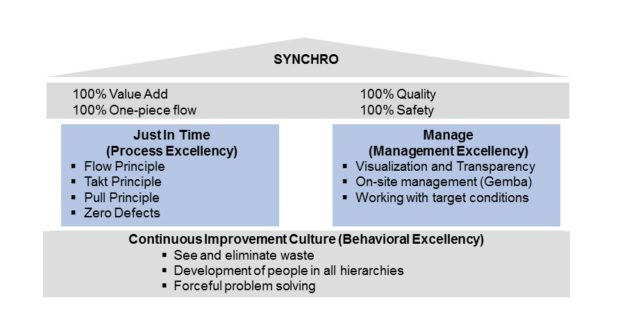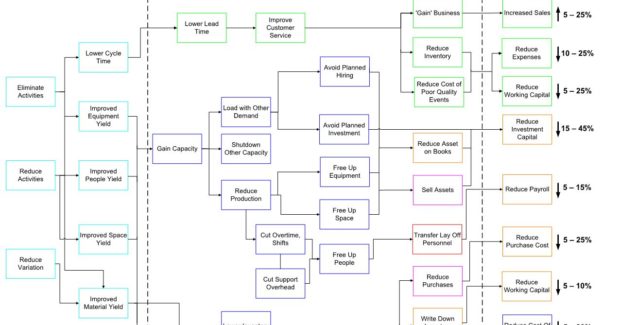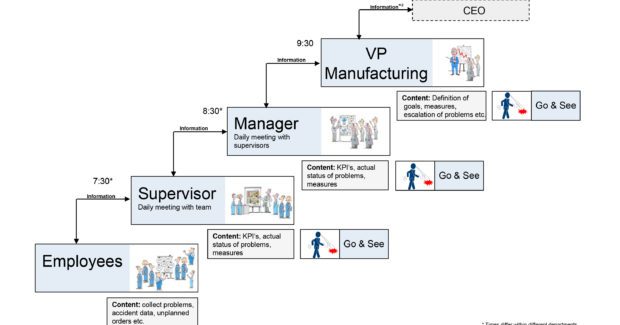Is Your Plant Running in Place or Gaining Ground?
The deep-seated cultural change required by Lean manufacturing is difficult for many metal fabricators that are trying to become more competitive by attempting to apply certain Lean principles without a deeper understanding of the process itself and its parts. The willingness to transform firmly established business approaches is not easy, but it is a requirement for success that will pay dividends in the long run.
Posted: October 26, 2016
Most fabricators have expressed at least some desire to operate Lean. Although the number of technical and process improvement changes that have occurred over the last few decades are almost unfathomable, a truly competitive business environment has yet to be achieved. As we look back on the progress made through Just-in-Time (JIT), Quality Circles, Theory of Constraints (TOC), the Toyota Production System (TPS), and Lean – you pick the acronym – it is a wonder why we are not further along, especially considering the success stories and the number of higher education classes that focus on Lean principles. The issue is that although many companies are increasingly and rigorously applying Lean principles, there is simply no easy solution to achieving success. The best approach requires businesses to have a deeper understanding of the process and its parts.
THE BUILDING BLOCKS OF LEAN MANUFACTURING
Many actions are required for Lean concepts to be implemented successfully. These actions fit together much like the wooden blocks used in the game Jenga that are stacked in a cross-hatched pattern to form a strong tower. Players remove blocks one at a time until the tower collapses. As in Jenga, all of the Lean building blocks work together to keep the tower upright and functioning. It is possible to operate with pieces missing, but for how long and to what value?
The “wooden blocks” of Lean manufacturing are a customer focus, Lean tools, a deployment plan, a knowledge base, skill sets (at some degree of proficiency), commitment, site organizational structure, objectives, identified potential benefits, measurement and tracking, senior management support, accountability, a change-oriented culture, and willingness to share skills. If all of these blocks exist, it becomes easier to form a strong and successful structure.
ESTABLISHING A LEAN MINDSET
For a company to really gain ground in establishing a Lean organization, all of the building blocks must be vigorously addressed and arranged together. This requires a fundamental commitment from management within the business as well as its controlling bodies, such as the board of directors. Since many of these key players may have little or no Lean application experience, it is often necessary to educate them to accept a little less return in the short term in favor of long-term success. They must share the mindset that a shop must chase more than labor costs, the smallest part of the manufacturing dollar, but also total installed costs, cycle time, setup reduction (in terms of accounting systems), as well as consider the impact of cross-training. System-wide changes are therefore crucial for a successful Lean implementation.
Once management is on board, the following process will help guarantee successful Lean implementation. First, staff must be arranged and a Lean core team must be identified. This team will champion and lead implementation, develop plans for a selected value stream (either transactional or manufacturing) and the expectations for results. With this defined, all individuals should be trained in Lean thinking and its methods. As implementation begins, rigorous project management becomes necessary. The core team should design and launch the transformed value stream, measure the results, react, and modify as necessary to achieve the desired targets. Eventually the core team will turn the process over to the production team, which will sustain it. They are then free to move to the next value stream and repeat the process.
Leadership should play a visible role in the process as well. For example, they might contribute Lean ideas, review Lean results as part of the quarterly operating meetings, or promote the use of real examples to help illustrate the dollars of potential and ROI.
SEVEN TENETS FOR IMPLEMENTING CHANGE
As you begin to examine the potential of implementing more Lean thinking within your organization, remember these seven basic tenets that are designed to increase your chances for success:
- It takes understanding. Lean is a discipline, as opposed to a goal or target.
- It takes commitment. Lean manufacturing does not happen overnight. It is a long road with potholes and winding curves. Celebrate the quick wins, plan and prepare for the long haul.
- It takes time. To fully change the culture and introduce new methods requires a process of Define, Measure, Analyze, Improve and Control (DMAIC). History shows that Lean concepts deliver benefits and the sooner you embrace and apply them, the sooner you can reap the benefits.
- It takes rigor. Investigation into root cause and implementation of true countermeasures is a necessity. Something that goes wrong today must be totally eliminated for the next run.
- It takes new discipline. A very high level of discipline is required to make the transformation stick. Repeatability of the process is the result. A “no excuse” culture must be the norm.
- It takes new thinking. Some sacred cows will not make the entire journey over the mountain. Letting go of the past and thinking “outside the box” are critical to success.
- It takes everyone’s involvement. There is no “opt-out” option. Everyone in the organization – from the board of directors to the machine operator – has to get involved. Do not underestimate the amount of change that is required. It cannot be done by just a few people. People tend to support what they help create.
Many companies are great at applying business tools, but the deep-seated cultural change that is required by our leadership causes them to continue to fail. I am reminded of a joke that goes, “How many psychiatrists does it take to change a light bulb?” The answer? “Only one, but the light bulb has to really want to change!” Cultural change and a willingness to transform deep-seated business approaches are not easy, but they are a requirement for success. Although this can be difficult at first, in the long run it will pay dividends. What about your company, are you running in place?








